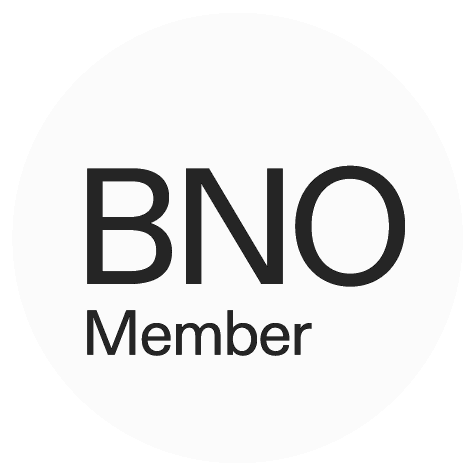When an organization grows, multiple products, departments and/or categories are created. How these different parts relate to each other as brands will have to be determined at an early stage. Investing in brands without a clear model can ultimately turn out to be wasted capital. Which one to choose from the 4 models below differs per situation. The choice depends on many factors; objective, difference in target groups, existing successes. Our experts will be happy to guide you through this phase. Contact us by mail or make an free appointment

1. A brand as an umbrella above its products
A company entering the market as Branded House expresses its value proposition in a single voice. In most cases, the company name and brand identity are one and the same. A flagship brand that encompasses all activities and divisions of the company. Because only one brand has to be invested in, this strategy is often seen as cost-effective. Frequently cited examples of the Branded House model include Google, Fedex, and Calvé.

2. Different Autonomous Brands
The opposite of a Branded House is a House of Brands. The sub-brands are featured or promoted, rather than the company or corporate brand. Hierarchies within the company are more complex. Many House of Brands companies are consumer products or clustered companies that acquire brands, especially large, global brands with established shares, that also operate autonomously in their business operations, even though they are part of a larger whole.

3. 'Powered by' the motherbrand
Endorsed branding is a model consisting of different products that are positioned separately from the parent brand. Although these sub-brands are different, they each maintain an association with the endorser's parent brand through visual reference. This model takes advantage of the brand value and reputation of the parent brand, while at the same time enjoying independent positioning, visual identity, personality and messaging per brand. There is often a strong common denominator with the parent brand; the industry, the type of product or product type, so that a 'logical' connection remains with the overarching brand.

4. Mixture of all kinds of brands mostly related with one big brand
There may also be a combination of different models. In that case, there is often one big brand, such as Coca-Cola or Pepsi, where the name of the company corresponds to one of the products. The company may have expanded its portfolio to include other products over time. These products are associated with the main company, but are different own brands, with their own target groups and USPs.
Meet the masters...








